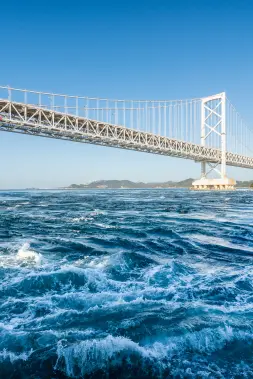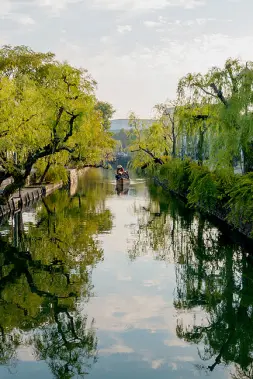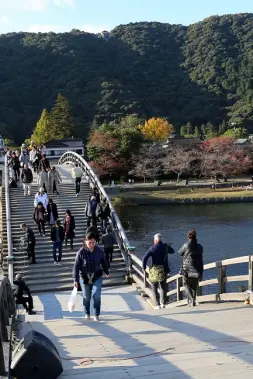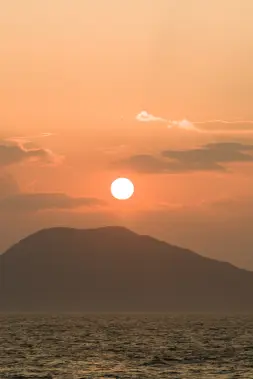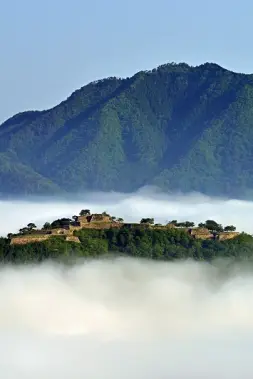Adventure & Experience
Travel Back in Time! Enjoy the History and Retro Cityscape of Ehime!

Ehime, the northwest prefecture of Shikoku is an incredibly charming place. It features mild weather (conducive to cultivating mikan fruits), enduring local industries (such as the popular Imabari towel made with carefully selected materials), many of the venerated spiritual landmarks on the Shikoku Henro pilgrimage, and Dogo Onsen, the oldest active hot spring in Japan.
A spectacular view of Setouchi from Matsuyama Castle 132 meters above sea level
First, let me introduce Matsuyama Castle in Matsuyama, the capital of Ehime prefecture. It is the largest city in Shikoku and home to one of Japan’s only 12 surviving castle compounds built during the Edo period. Although Matsuyama castle’s original main tower, built in 1628, burned down after being struck by lightning in 1784, the tenshu reconstructed in 1854 is still standing today. Take a ropeway or a lift to tenshu perched atop Mt. Katsuyama at 132 meters above the sea and surrounded by a lushly forested park garnished by some 200 cherry trees on the castle grounds, it’s a formidable site even when seen from afar.
The castle’s sprawling structure is deliberately complex, with a maze of zigzagging stone walls, wooden gates, and stairs. But while the outside projects the image of an intimidating fortress, the inside feels like a friendly mansion. Once you arrive at the central tower, you can take off your shoes to freely explore the castle’s restored wooden interior, where overlapping levels with high ceilings and steep staircases display various artifacts and informational exhibits. The panoramic view from the top puts it all into perspective.
If you ascended the mountain via ropeway, be sure to enjoy the scenic ride back down on an open-air, single-seater chairlift, which feels like floating from the lofty privileges of royalty down to the popular pleasures of the marketplace below.
Sample local treats on Dogo Shopping Street
After Matsuyama Castle, take the streetcar to the Dogo shopping street (Dogo Haikara-dori). The 250-meter-long L-shaped commercial area, lined with around 60 local souvenir shops and eateries, connects Dogo Onsen Station to Dogo Onsen’s main building.
If you’re into local mascots, it’s a great place to buy goods branded with Ehime’s own Mican character. Interesting shops to sample local snacks include Dogo Tamaya for mikan onigiri, Tomoedo for dango, Rokujiya Dogo Store for Matsuyama tarts, Ichiroku Honpo for Shikoku confectionery Ichiroku tarts, and Mikan no Ki for everything mikan such as daifuku mochi, juice, soft ice cream, and jelly.
You can even stroll along the street wearing a yukata or take a nostalgic rickshaw ride through the neighborhood. It is also known as the setting for Soseki Natsume’s masterpiece “Botchan,” which was once depicted on the Japanese 1,000 yen bill. On the plaza in front of Dogo Onsen Station, you’ll find Botchan Ressha, a restored antique steam locomotive, and Botchan Karakuri Clock. This mechanical clock was created in 1994 to commemorate the 100th anniversary of Dogo Onsen Honkan, modeled after its Shinrokaku drum house with red shoji panes. Every hour on the hour between 8:00 am and 10:00 pm, the clock comes to life with animated characters and scenes from Soseki’s novel Botchan set in Matsuyama and Dogo.
Stay at Funaya, a historical hot springs hotel in Dogo Onsen
Funaya was established almost 400 years ago as a traditional Japanese inn, although it now has contemporary rooms and suites in both Japanese and Western styles. Over the years, it has been frequented by haiku poets and other literati, including Natsume Soseki and Masaoka Shiki, as well as members of the Imperial Household. The hotel even has an exhibition room where you can see the mantelpiece and other elements of the original building where the Showa Emperor stayed in 1950.
One of Funaya’s best attractions is its baths! Funaya’s cypress Hinoki Yu and stone Mikage Yu onsen have both indoor and outdoor baths and saunas, with alkaline water drawn straight from the Dogo Onsen source, where you can spend a relaxing moment.
Funaya has all kinds of rooms to match any need, including Japanese-style rooms with gorgeous Japanese cypress bathtubs that fill directly with natural source water. There’s also the Haiku Lounge Suite that offers a panoramic view of Matsuyama city and the Dogo plains from its private bath.
During your stay, we recommend strolling through the hotel’s huge garden which includes over 200 types of plants. Relax and enjoy the garden from the windows of the terrace cafe Komorebi or enjoy lunch or dinner at the dedicated outdoor dining area Kawaseki which is located alongside a natural mountain stream flowing from the Mitarai river. Savor fine cuisine with seasonal ingredients from Ehime and Setouchi.
See Meiji-period architecture and explore an antique theater in Uchiko
The next day, we visited Uchiko. A 25-minute train ride south from Matsuyama Station, Uchiko is a more remote mountain town that thrived on Japanese paper and Japanese white wax manufacturing during the Meiji period. Local powerful merchants built their houses here, and the town flourished with rich culture, architecture, and infrastructure.
Today, Uchiko preserves its long main street lined with about 90 Meiji-period buildings featuring tiled roofs, wooden shopfronts, and lattices. This includes residences, artisan studios, shops, restaurants, and so on. On this street you’ll find the Kamihaga Residence and Machiya Museum which are open to the public to visit as museums, as well as retro cafés housed in “kominka” (traditional Japanese homes) such as Charme, or Denjiro. When walking through the street, you just may be lucky enough to stumble on a resident selling deliciously sweet dried persimmons outside their shop. The streams of middle school students heading home may even salute you on their way down the hill!
A famous hidden gem of Uchiko is Uchiko-Za, a Taisho-period (1912-1926) theatre tucked away in a residential corner just off the main street. Originally inaugurated in 1916, it was slated for demolition due to its old age but was saved thanks to the love the local community had for it and revived as a theatre in 1985 after its renovation.
Currently, the wooden theatre hosts traditional performances and various events about 60 times a year. Most enticingly, when there are no performances, visitors can walk around the theatre to explore the vintage human-powered mechanics of its seri and suppon trap doors, rotating stage, and naraku passageway located below the stage—a real treat for anyone who has an interest in Japanese theatre.
Gaze at the river from the elegant villa of Garyu Sanso
The last place I visited was Garyu Sanso. Another delicate historical and architectural gem of Ehime, it is nestled just above the Hijikawa river in the nearby town of Ozu. The exquisitely designed Garyu Sanso took 10 years of planning and construction to finally complete in 1907. Many of the fine details and excellent craftsmanship of the building can still be appreciated today, from the traditional thatched roofs to the many openwork carvings in paulownia and millennia-old yakisugi cedarwood, to the bat-shaped metal doorknobs of the main Garyuin building. You can also catch a glimpse of the spectacular masonry techniques of the builders back then through the carefully manicured stone garden and its stone walls and steps, seen as soon as you pass through Garyu Sanso’s entrance.
Once the dream villa of a wealthy merchant named Torajiro Kouchi, it was built in the sukiya-zukuri (elegant tea house built away from the main residence) style inspired by the Imperial villas in Kyoto. The property includes a peaceful riverside garden filled with precious natural wonders such as centuries-old maple, nettle, and yew plum pine trees and rare moss species.
The tatami mats of the stately Isshi room can be removed to convert the space into a Noh theater stage, where Bizen pots were placed under the floor to improve acoustics.
Though Ganryu Sanso is filled with all kinds of architectural wonders, the pearl of the villa is Furoan, perched on the edge of a cliff and built to look like a ship (similar to Kyoto’s Kiyomizu-dera temple). It is supported by a live tree attached to the house using the rare sutebashira technique. Inside is a tea room with a ceiling made of a single sheet of woven bamboo (takeajirobari), which serenely reflects the rippling moonlight from the river.
And with that, my trip around the sightseeing spots of Matsuyama City ended. What do you think? Please visit Ehime Prefecture, full of Japanese tradition and history!
Photographs and text by Cherise Fong
RELATED DESTINATION
Ehime
The Ehime area has the Nishiseto Expressway, one of Japan’s leading cycling roads, and the area draws attention from cyclists around the world. Ehime contains many places where visitors can encounter history, including Dogo Onsen, a hot spring with a history stretching back some 3,000 years, and the streetscapes of Uchiko, which still look like they did the Edo and Meiji periods.







































